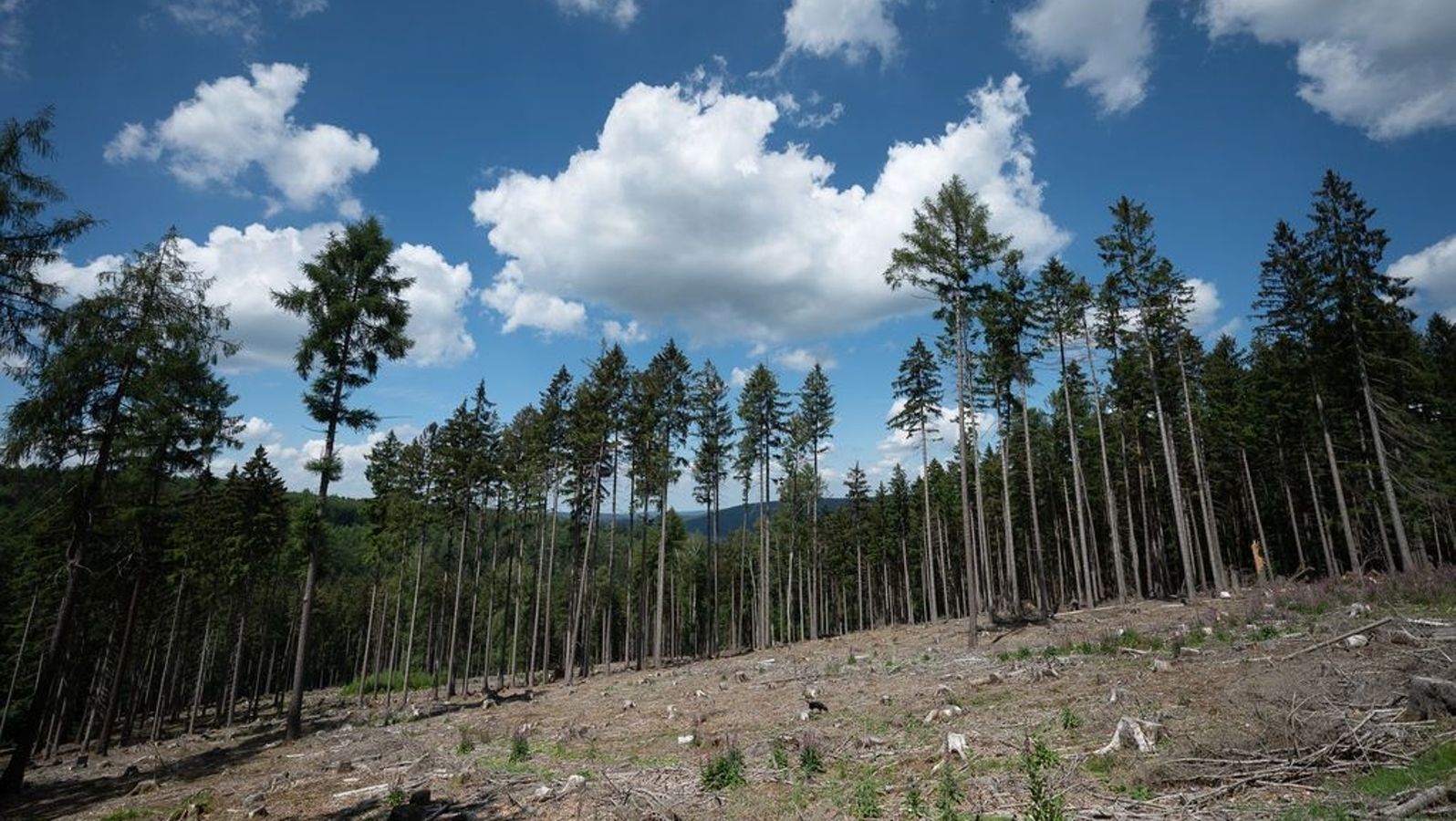How do the forests of Lower Franconia react to climate change? And how can and should help the forest? Franconian foresters are currently dealing with such questions in a workshop in the Main-Spessart region. 120 forest workers are looking for ways to help make the forest resilient in heat and drought.
Suffering beech plant in the Zellinger municipal forest
The first workshop day took place in the Zellinger community forest. Here you can clearly see the consequences of climate change, said Wolfgang Grimm in an interview with Bayern2-Regionalzeit. The ancient beech trees in the forest, some of which are as old as 140 years old, have massively lost their leaves, and many trees have already died. Grimm is one of the co-organizers of the workshop and Head of the Forestry Department at the Office for Food, Agriculture and Forestry (AELF) in Karlstadt.
Grimm said that the effects of heat and drought in the forest are visible to all. From below, the forest is heavily forested with a young generation of trees, partially obscuring the view of the treetops. “But if you walk along the forest paths and look carefully, you will see that there are many dry branches in the crowns,” says the forester. That the tops of trees are light and translucent is not a natural thing.
The heat causes the bark to explode away
Drought is the main problem in the Lower Franconian Forest, says Wolfgang Grimm. Trees need a lot of water to carry out photosynthesis. However, heat is also noticeable in beech because it has a thinner and more delicate bark. “If it gets above 40 degrees, the cambium—that is, the growth layer—also dies in the crown area where the sun shines. The bark breaks off and the beech practically dies from above,” explains Grimm.
Heat-damaged forests can be found in many places in Franconia. In addition to Mainfranken’s hot climate, the soil is often very calcareous and can therefore store less water. Similar problems exist in the Lower Main, in the sandy soil Aschaffenburg-Kahl-Alzenau region.
Forest irrigation: “a crazy effort”
But what can foresters do to best support the forest? Irrigation is only a limited option and is already implemented in very small areas, says Wolfgang Grimm: “There are irrigation systems, but on a very small scale, because it is a crazy effort, very expensive and not affordable for a forest area.”
One such example is a community forest in the Würzburg region, where about 9,000 young trees are artificially irrigated to survive. In general, according to Wolfgang Grimm, it makes sense to examine each forest individually to see which trees are still reasonably healthy and which are not. It’s about a balancing act: Sometimes it can help to remove old trees so that young trees get more light – but sometimes it can also help to leave old trees standing so that they give young trees much needed shade.

“Total coffee aficionado. Travel buff. Music ninja. Bacon nerd. Beeraholic.”







More Stories
“Austria is turning into a political gravedigger”
Malaria mosquito appears in Italy | Nachrichten.at
The distance from Earth to the Moon is not that easy